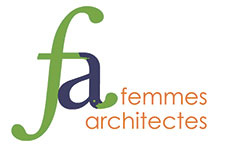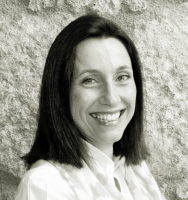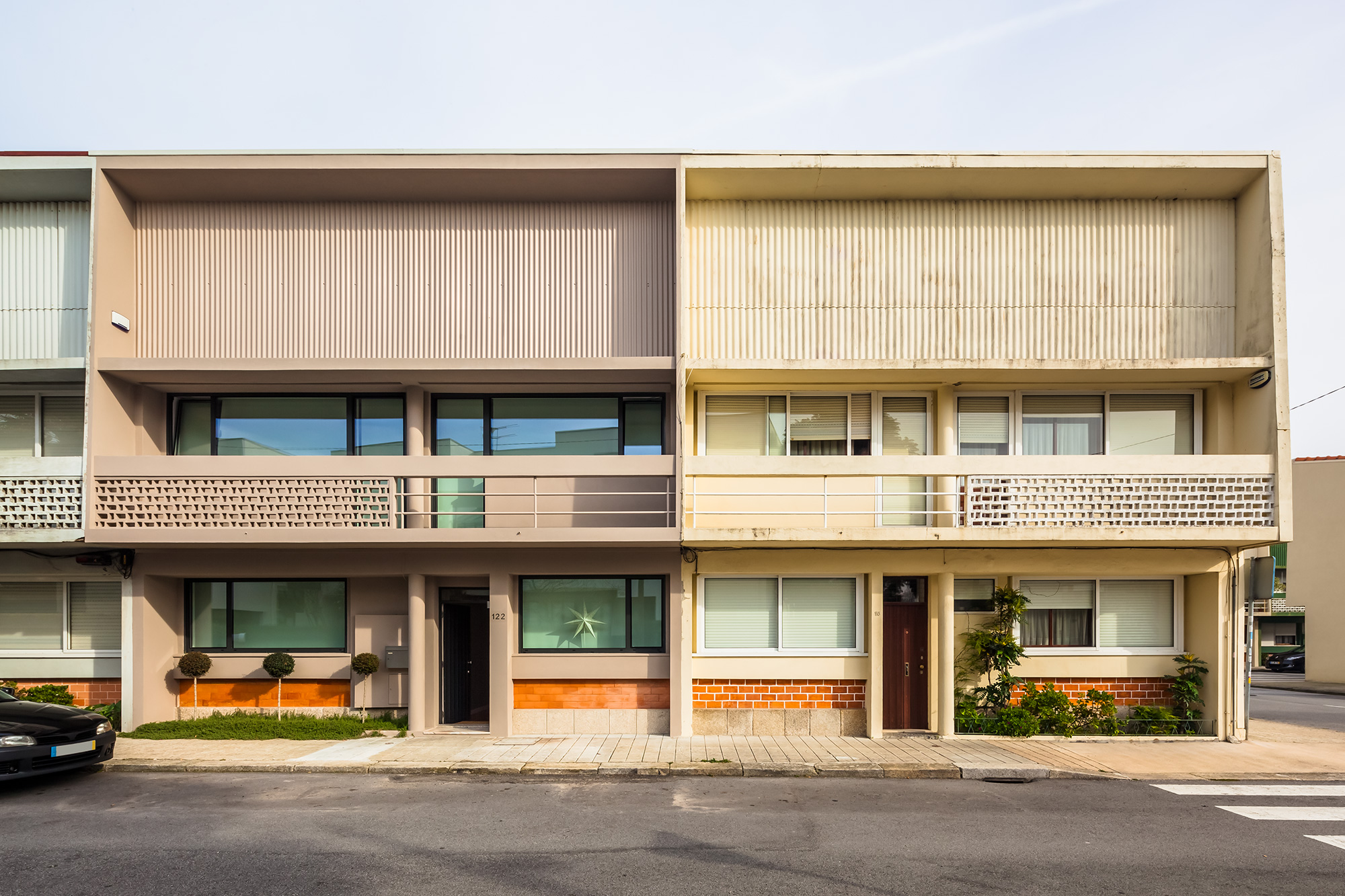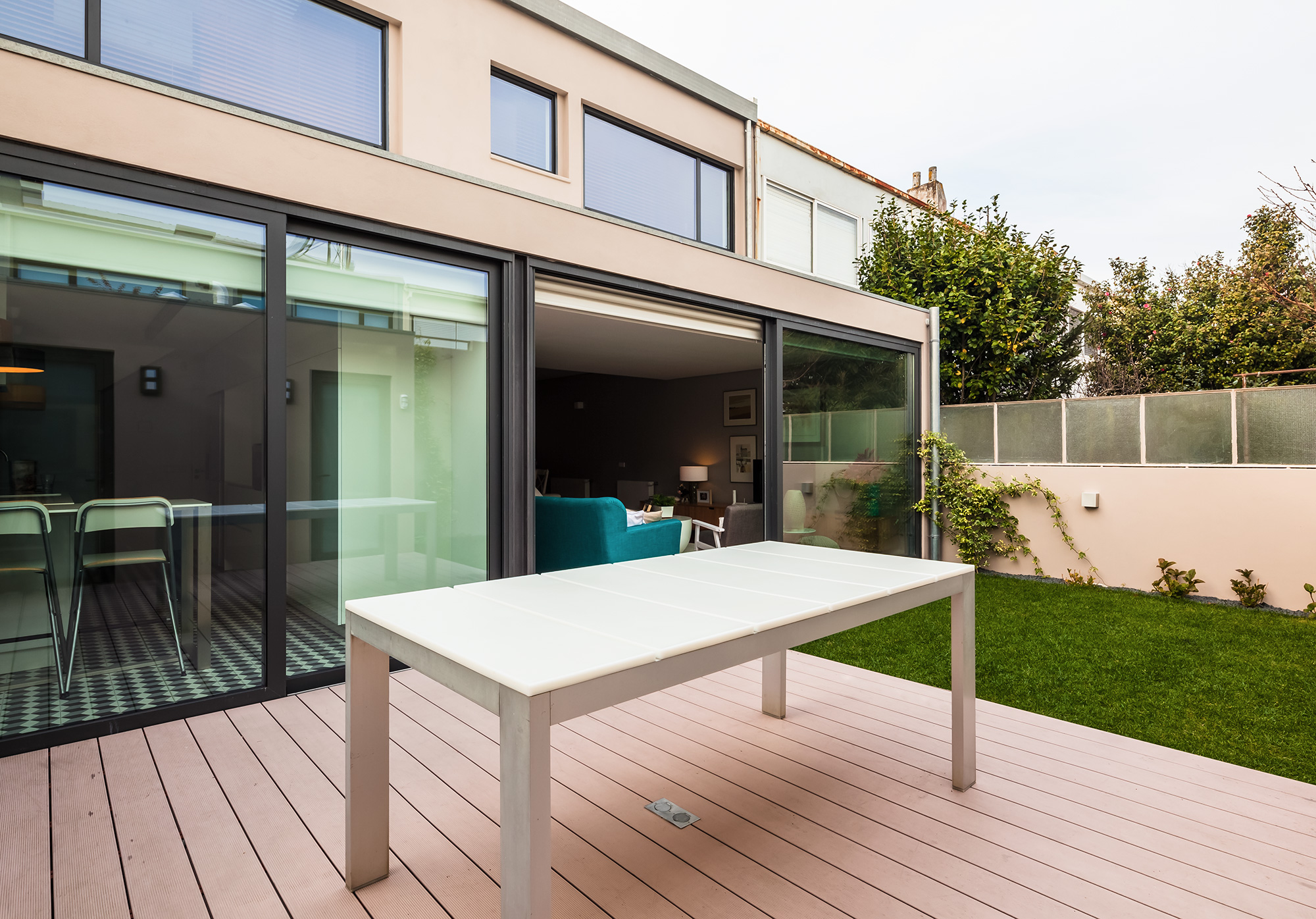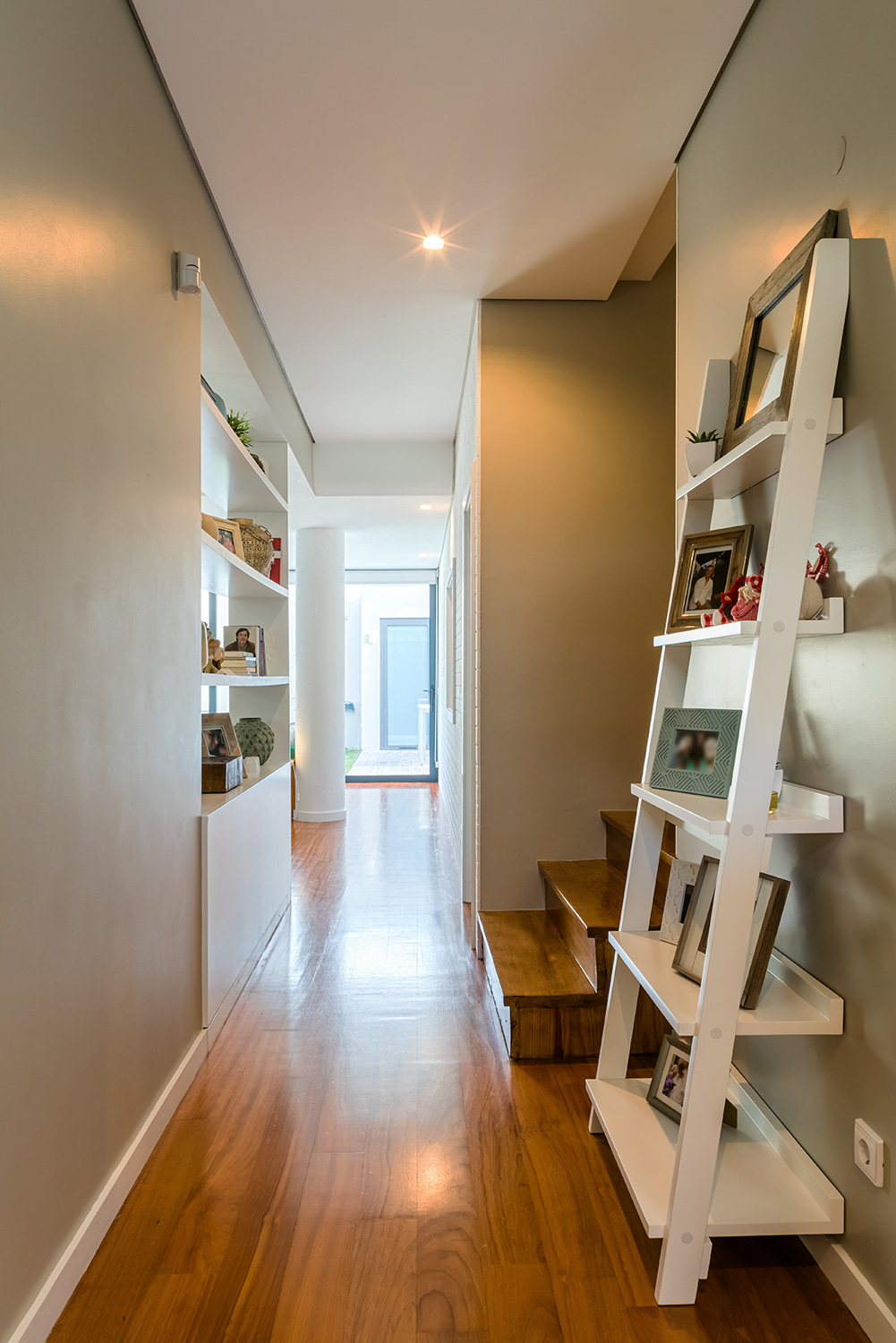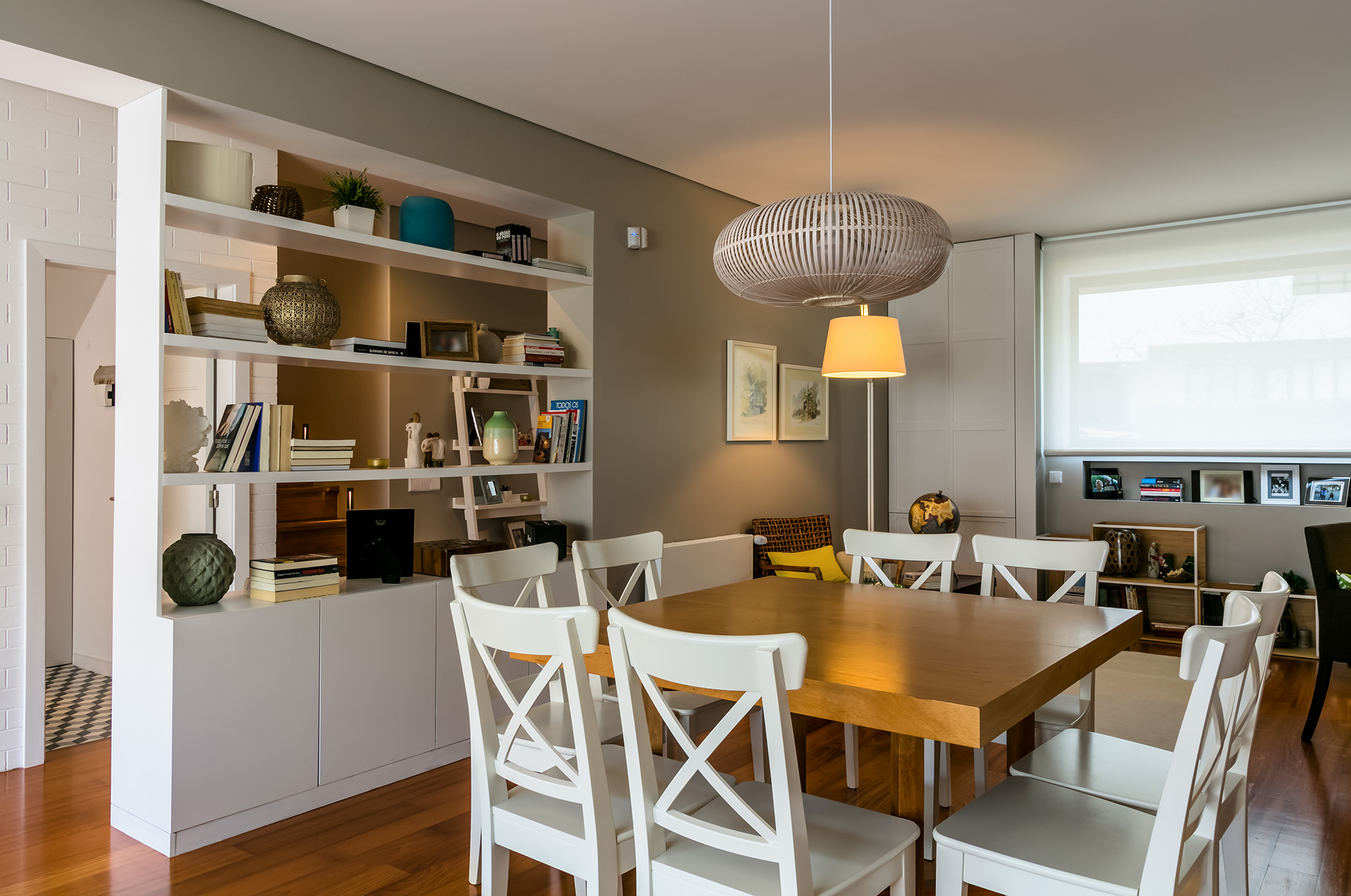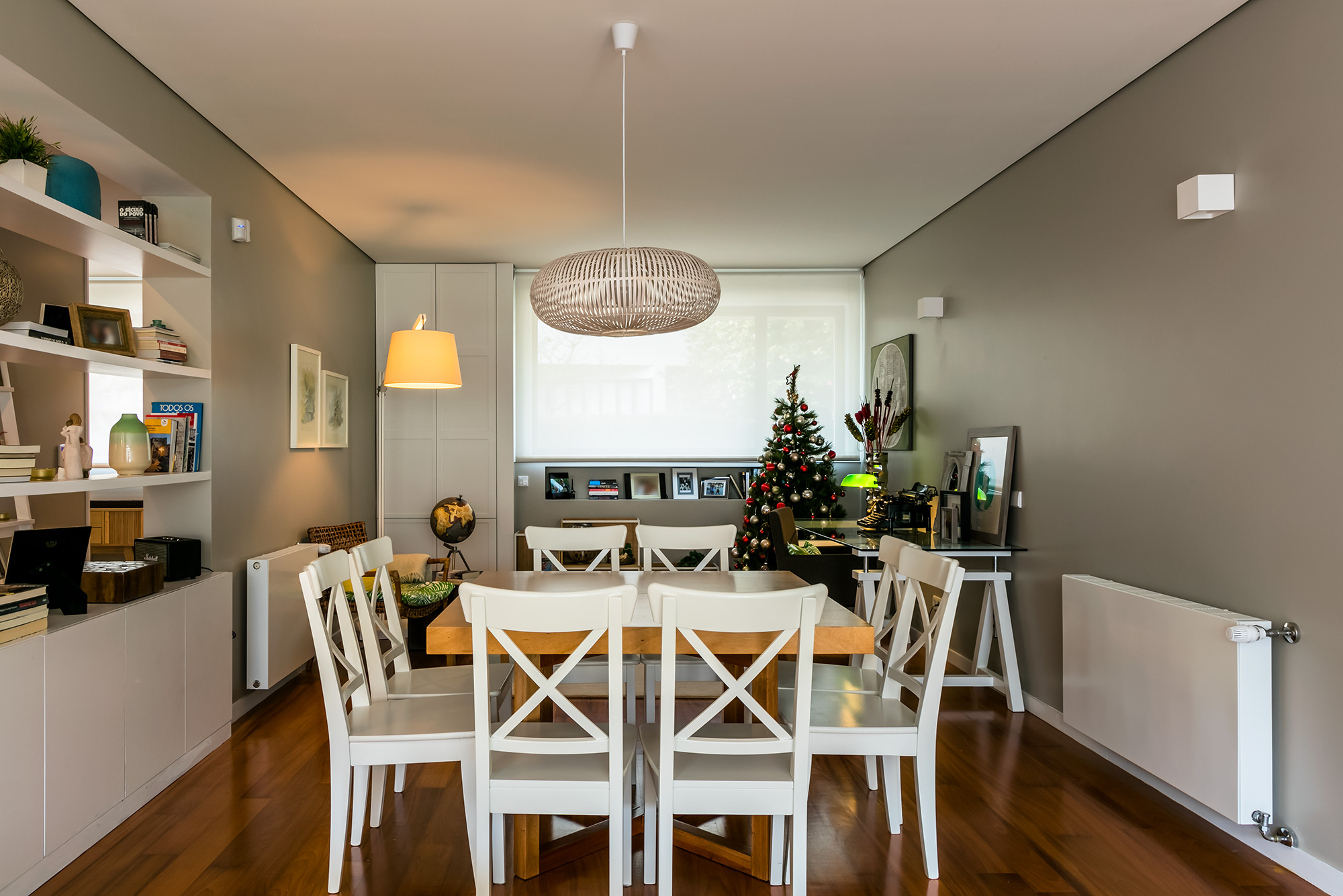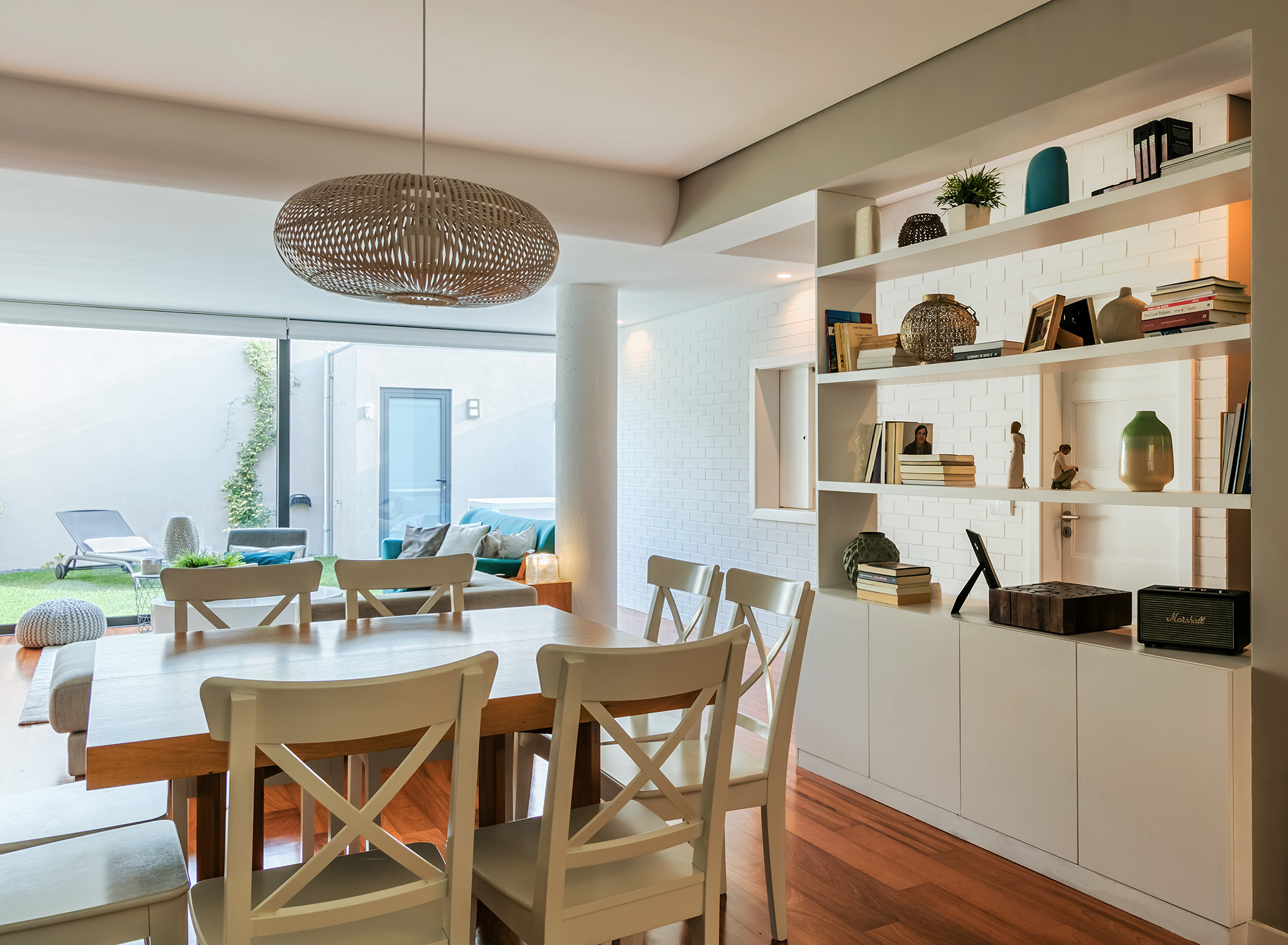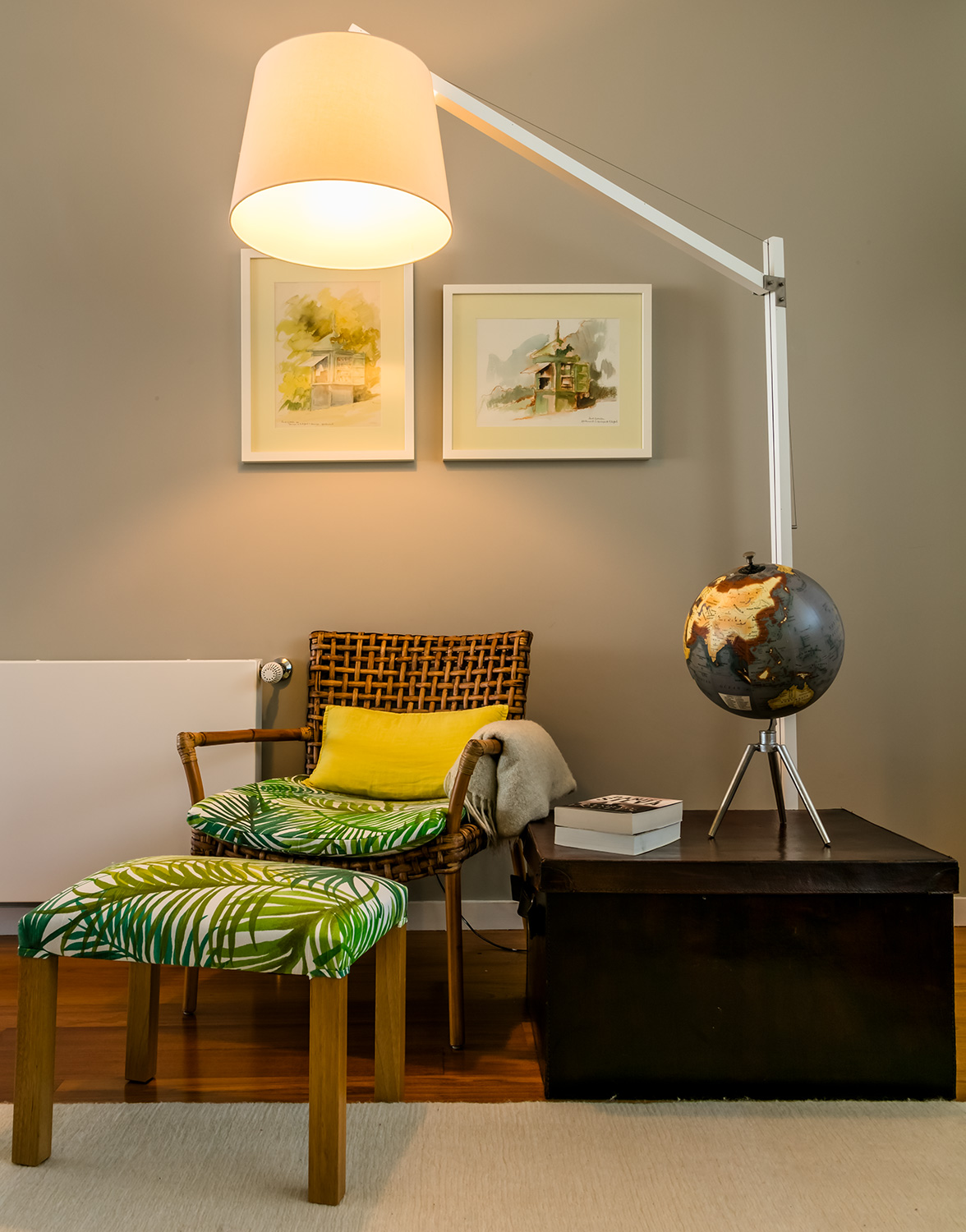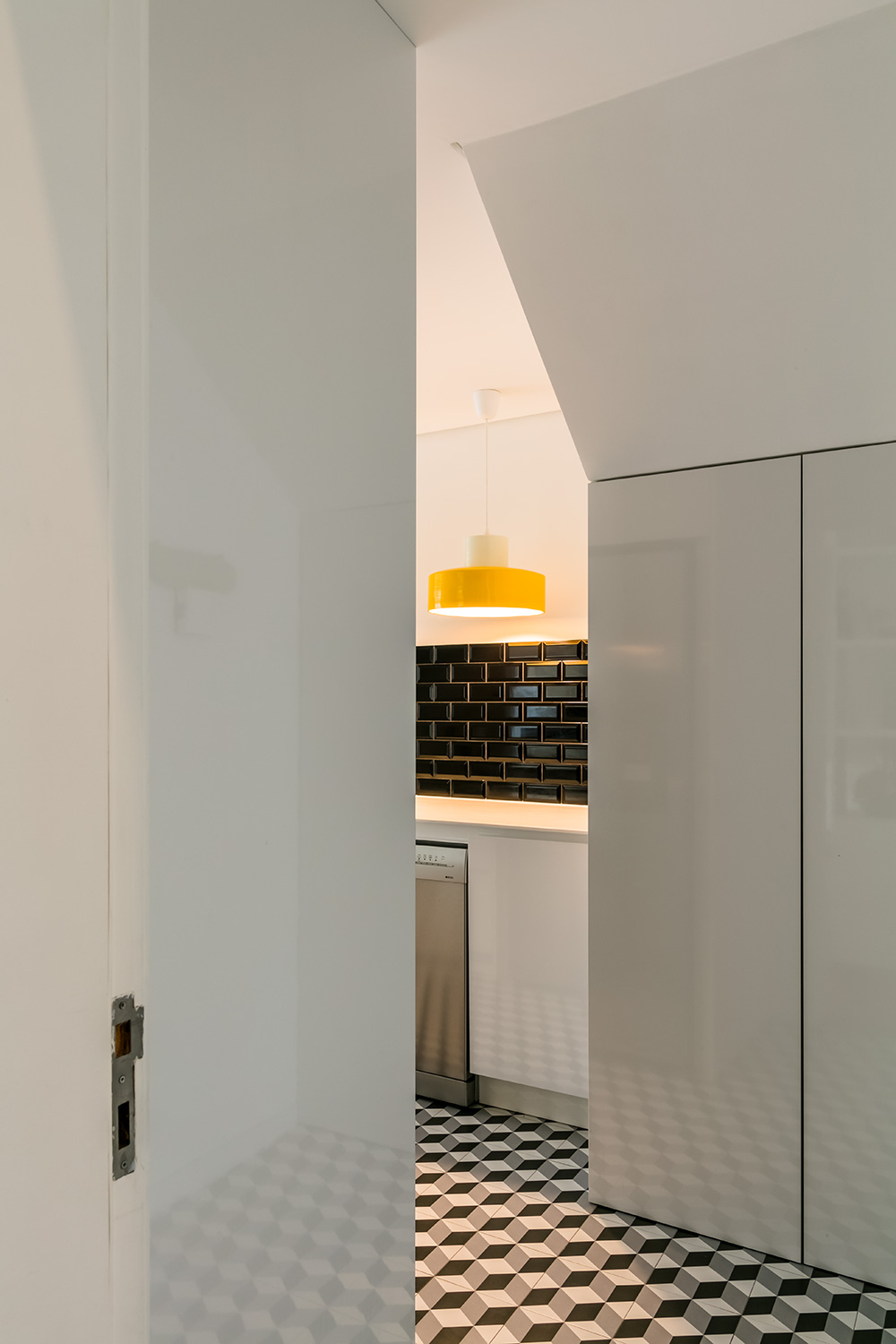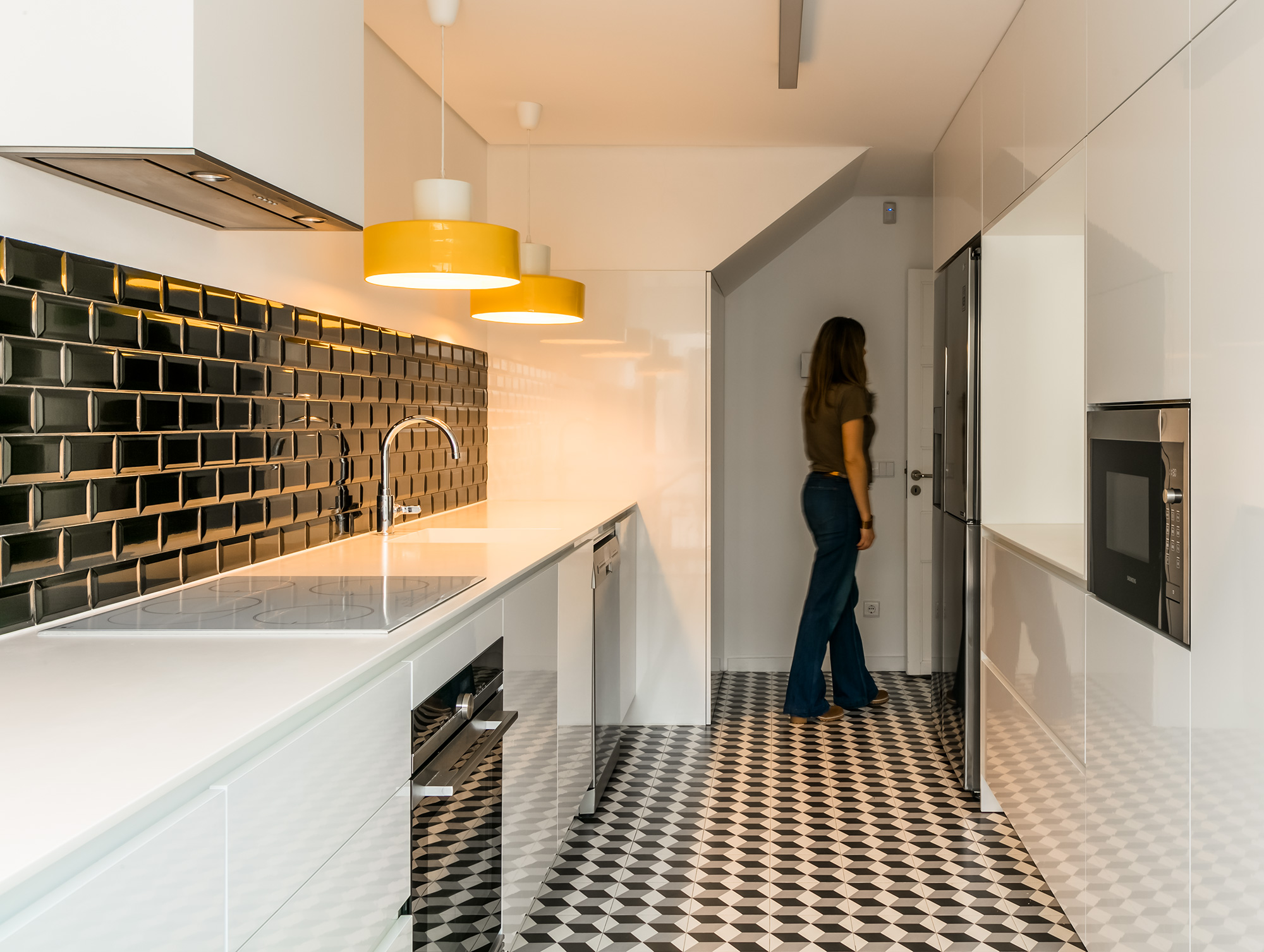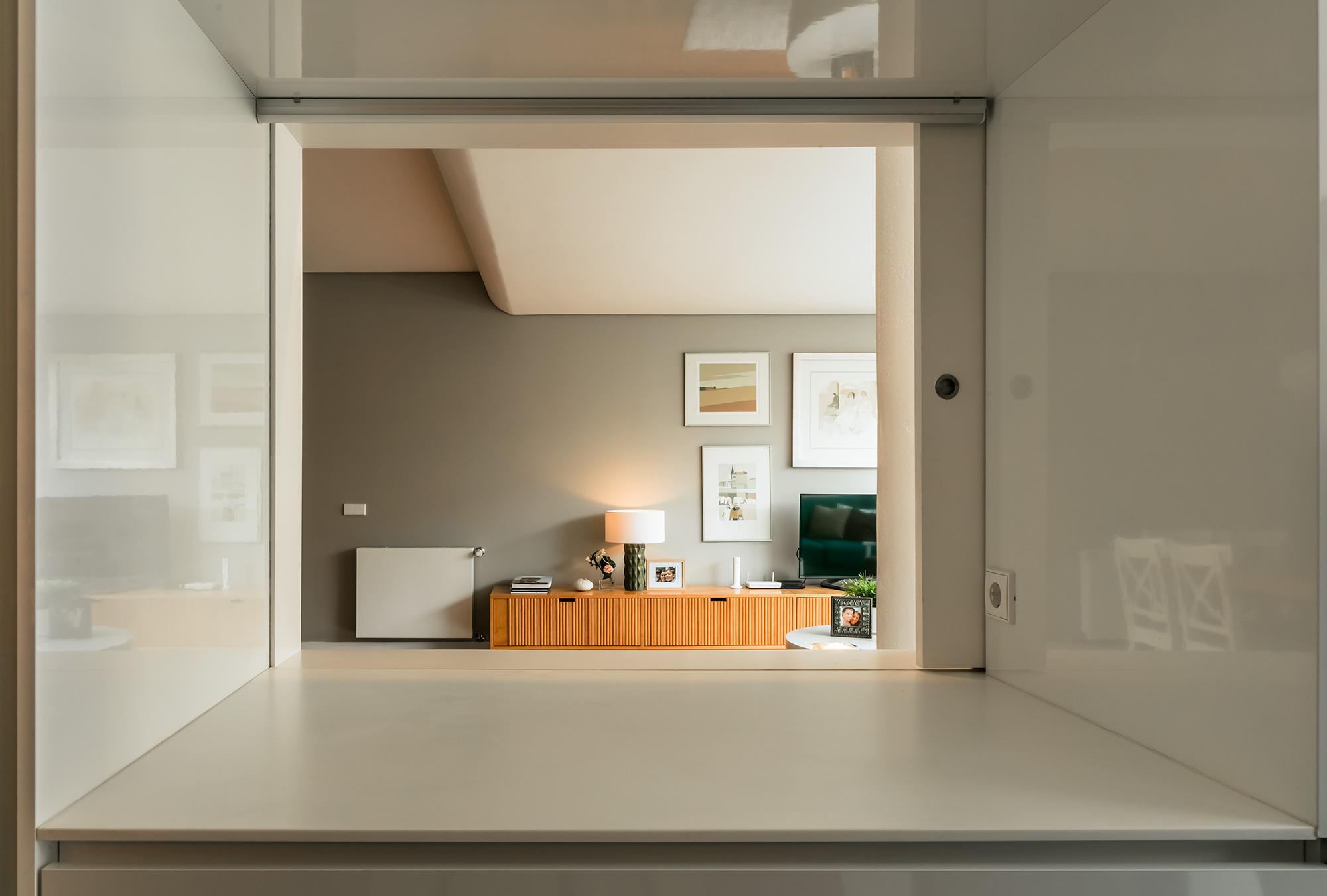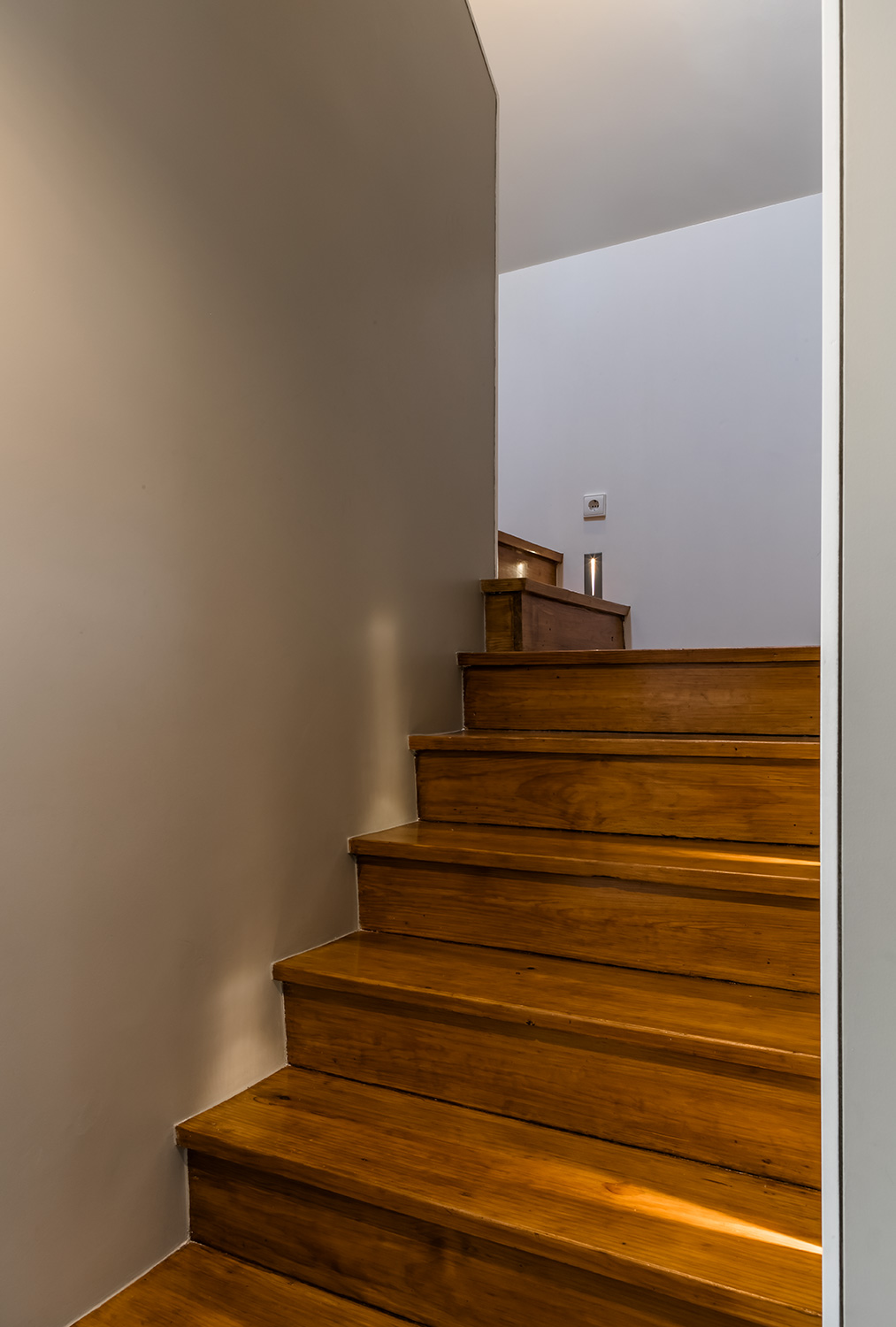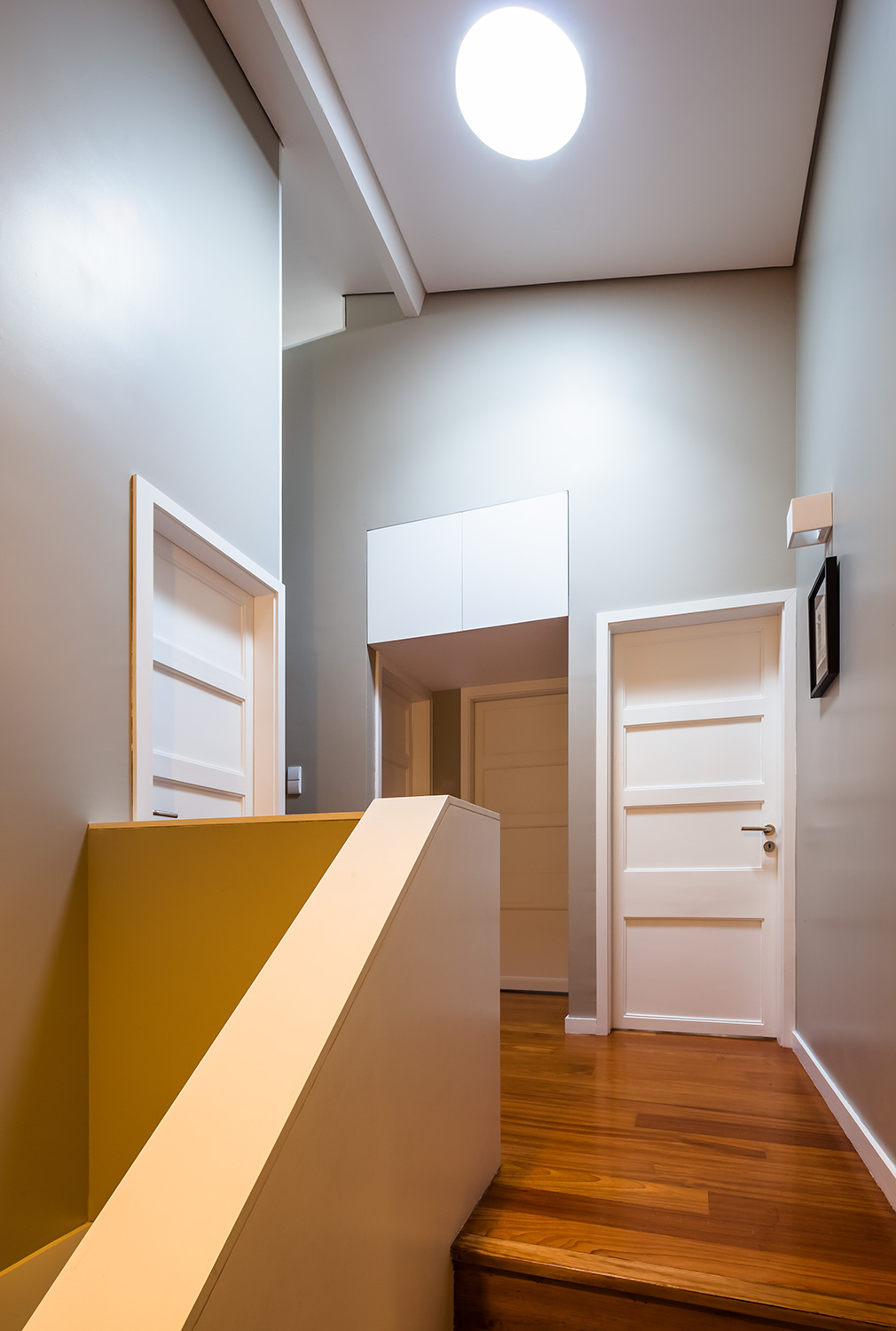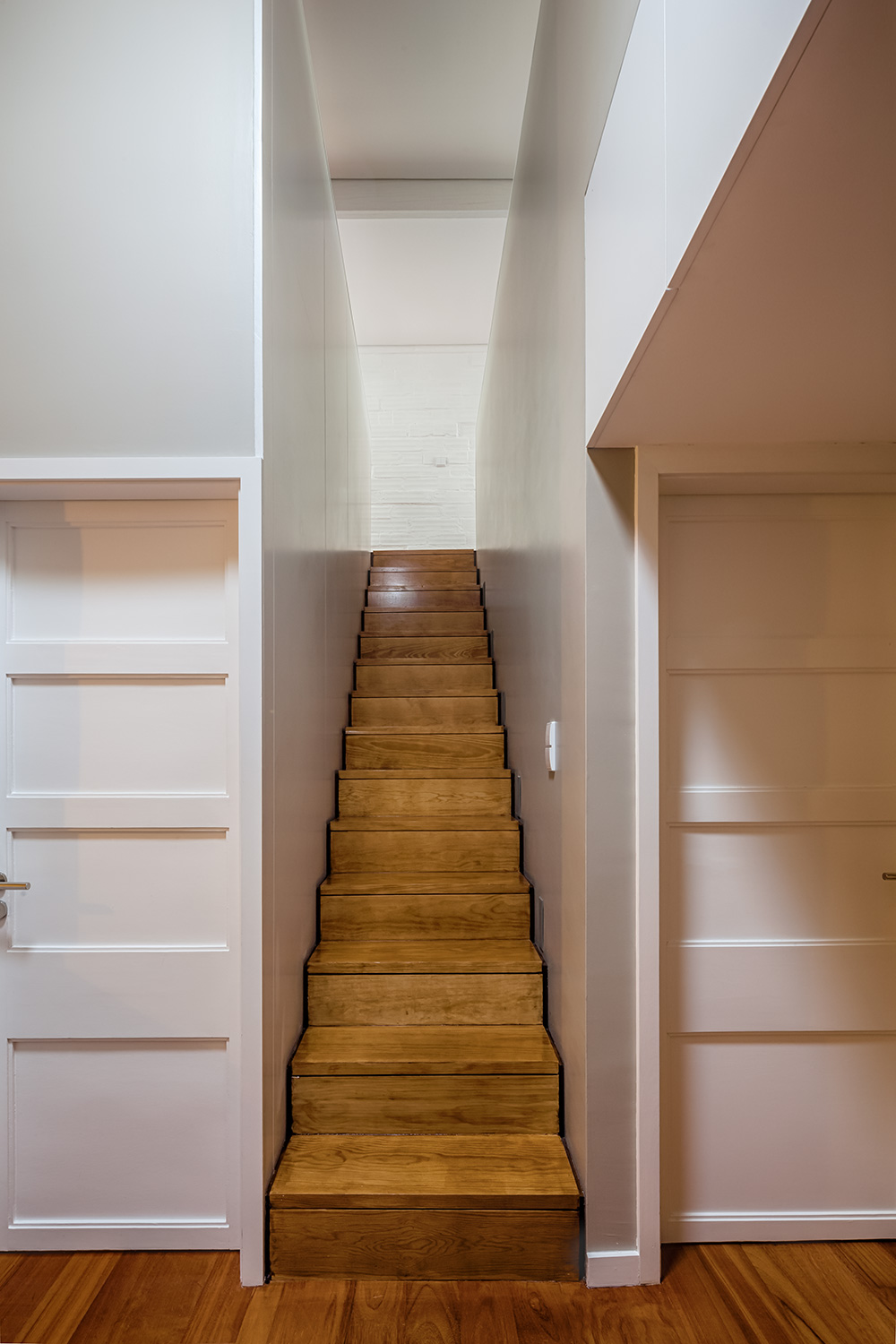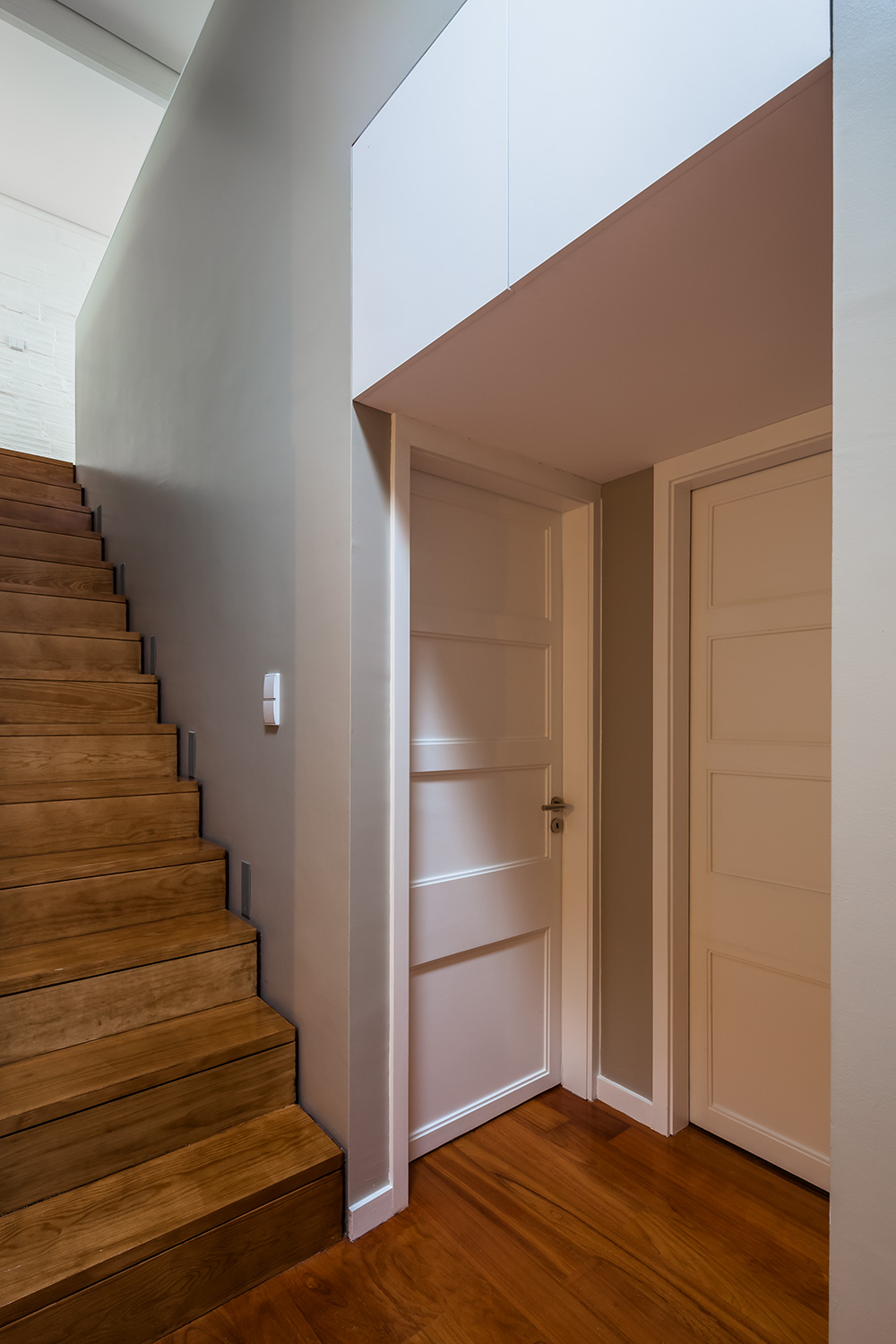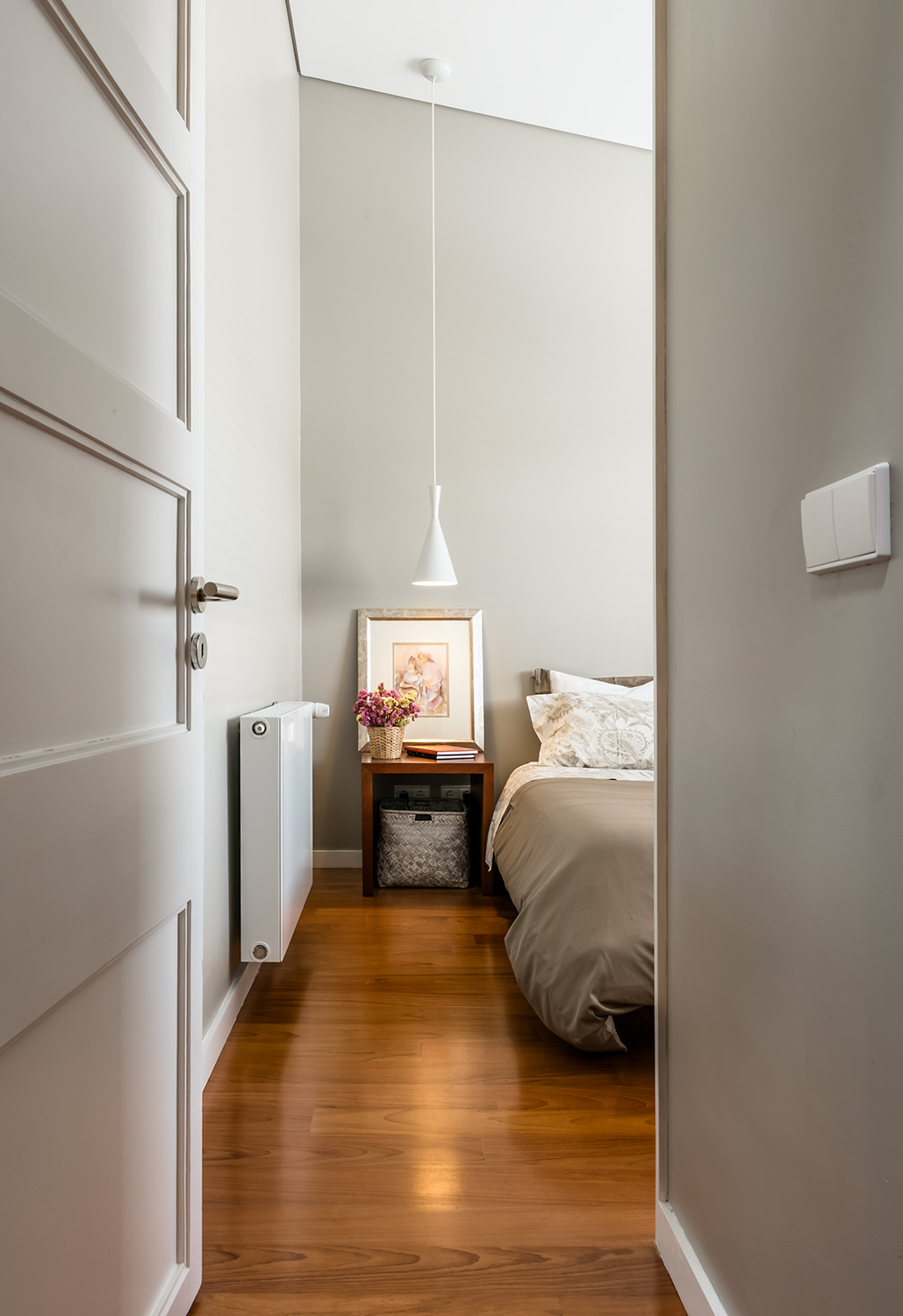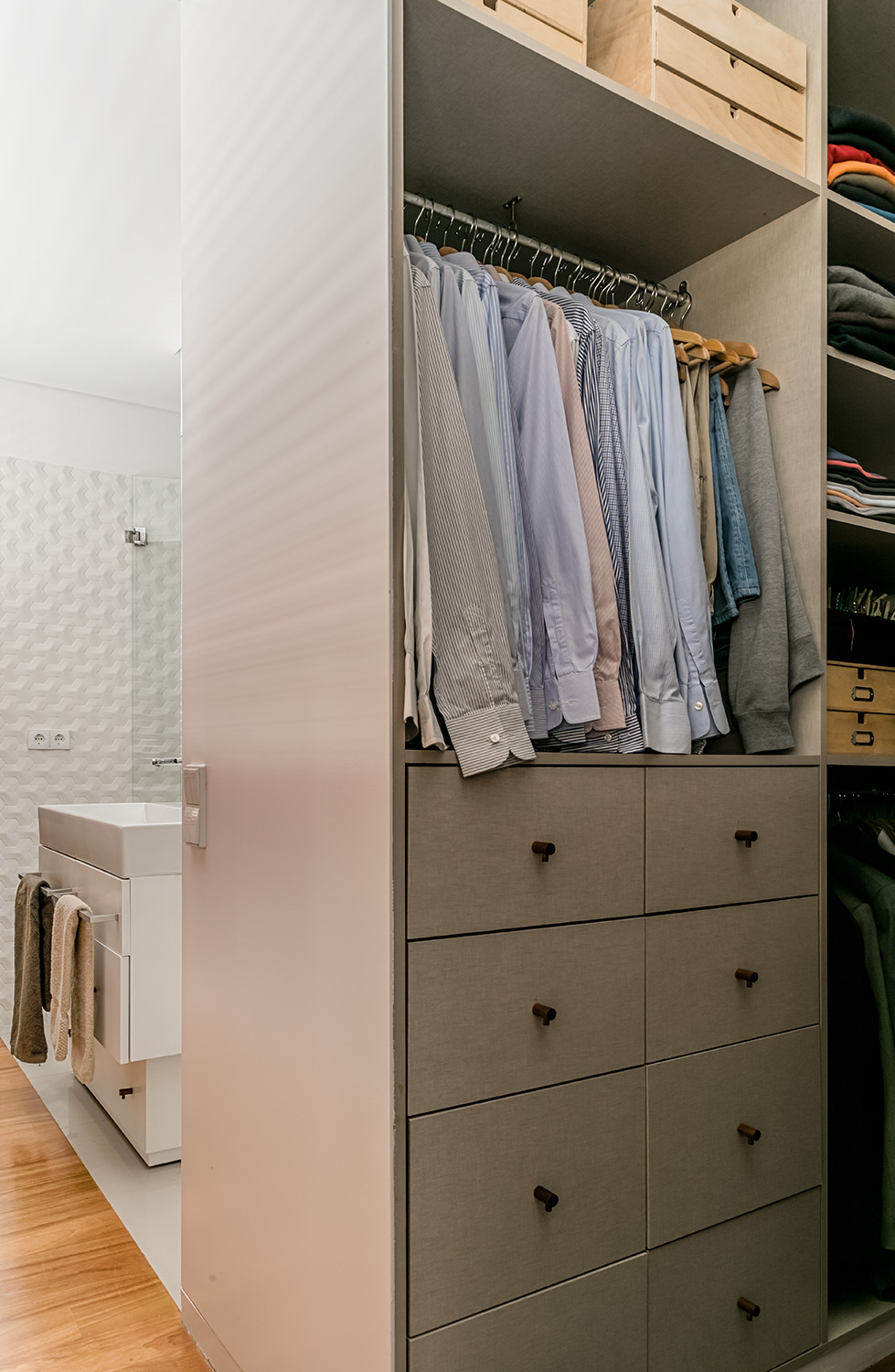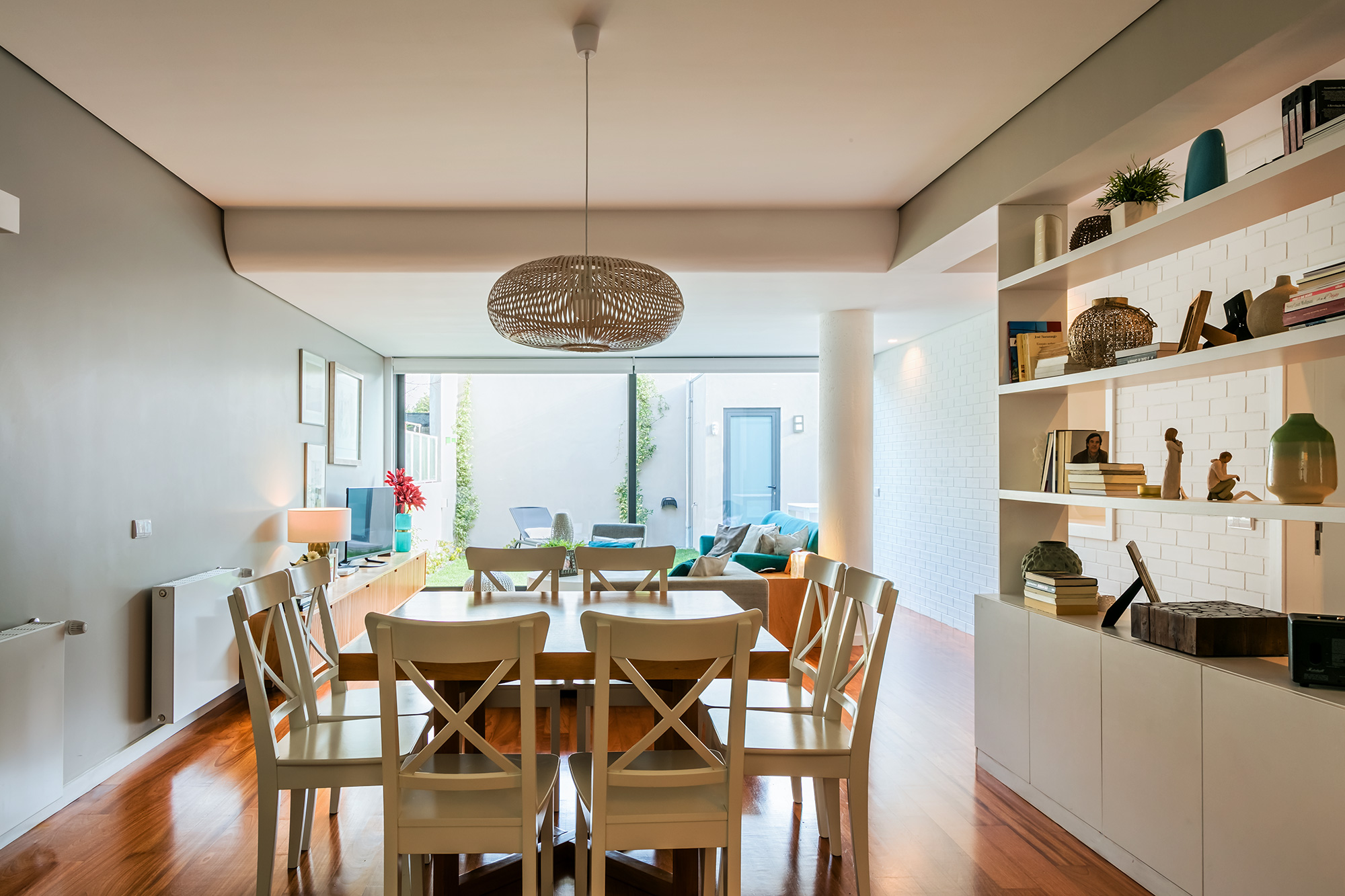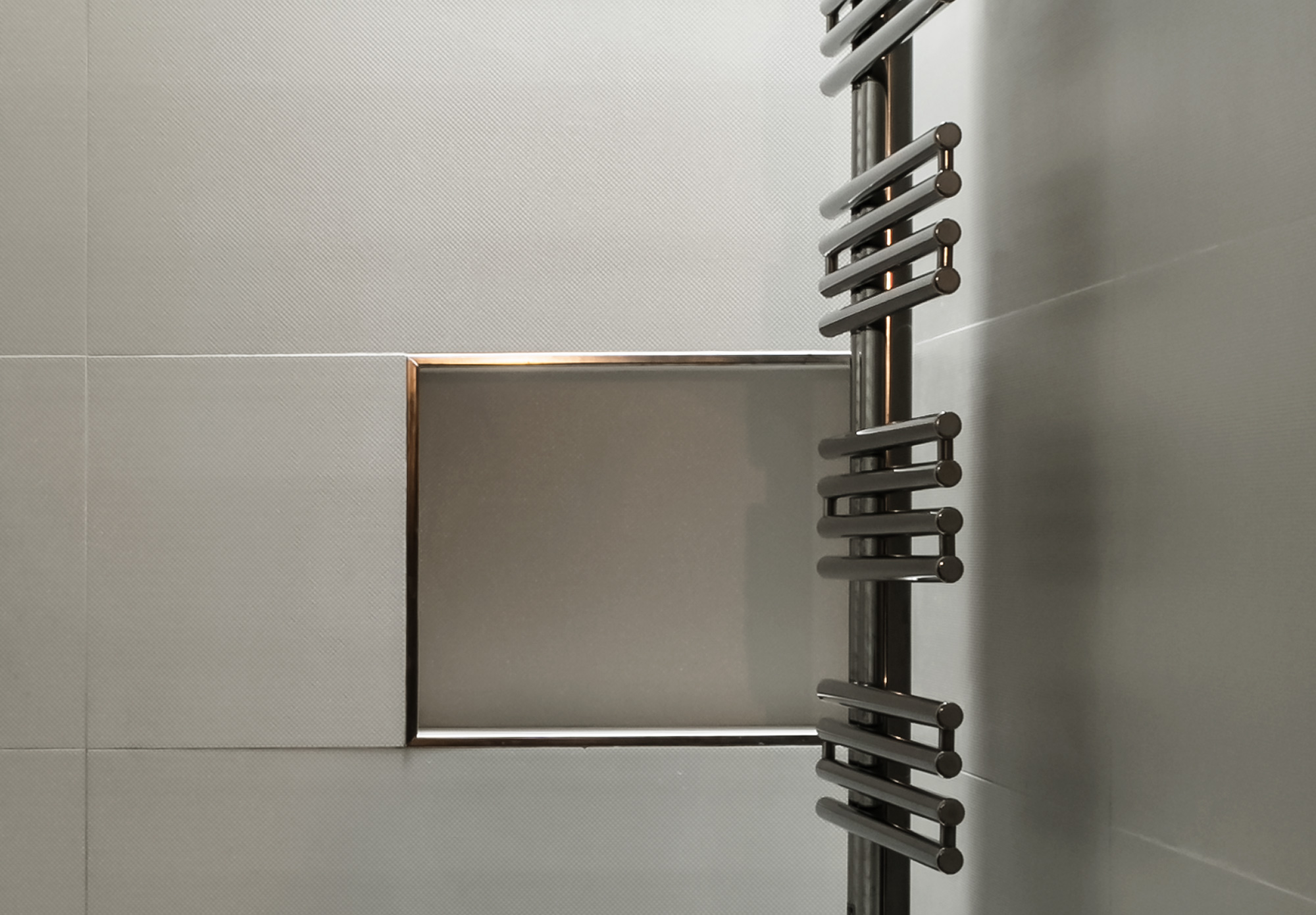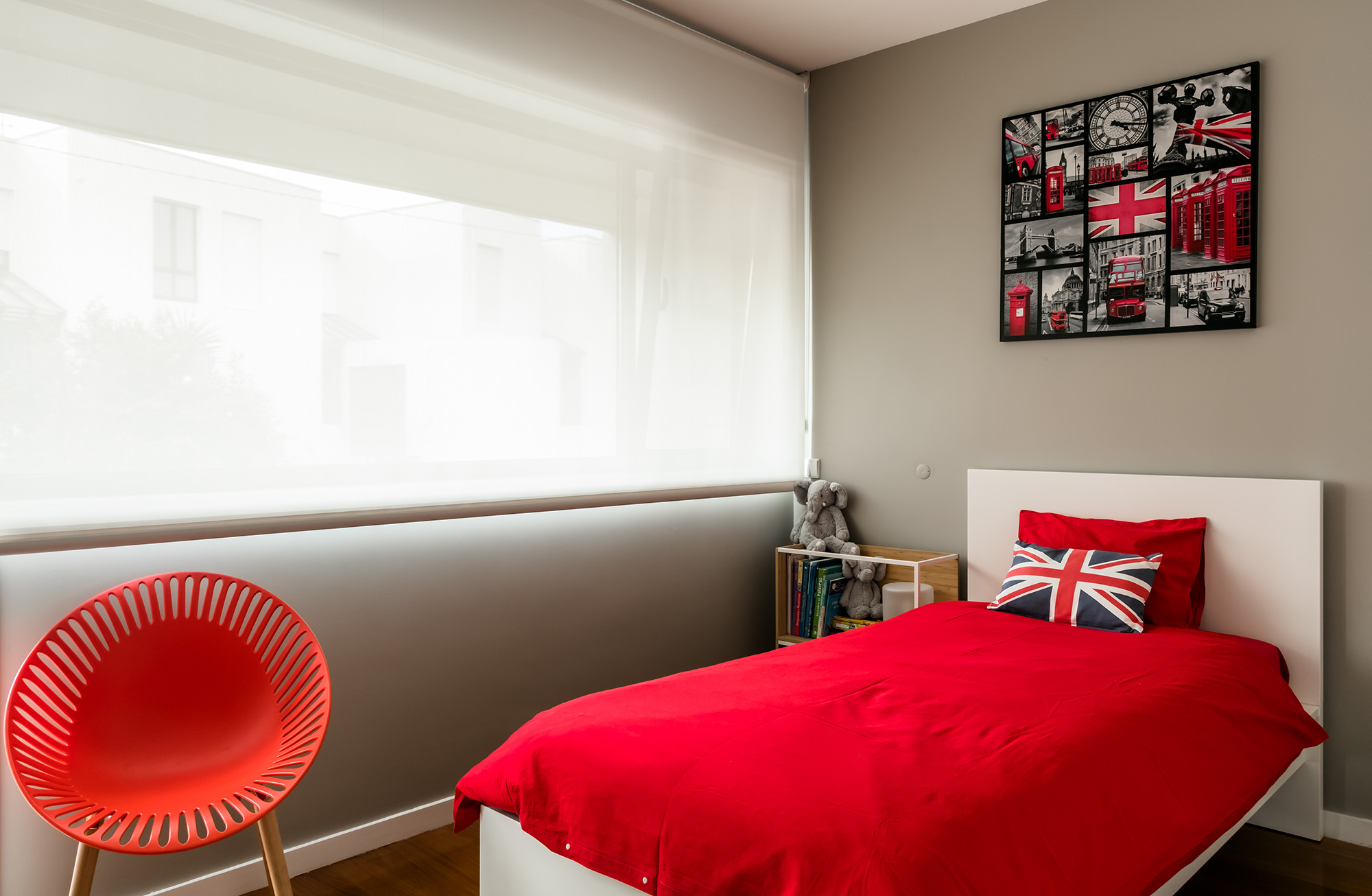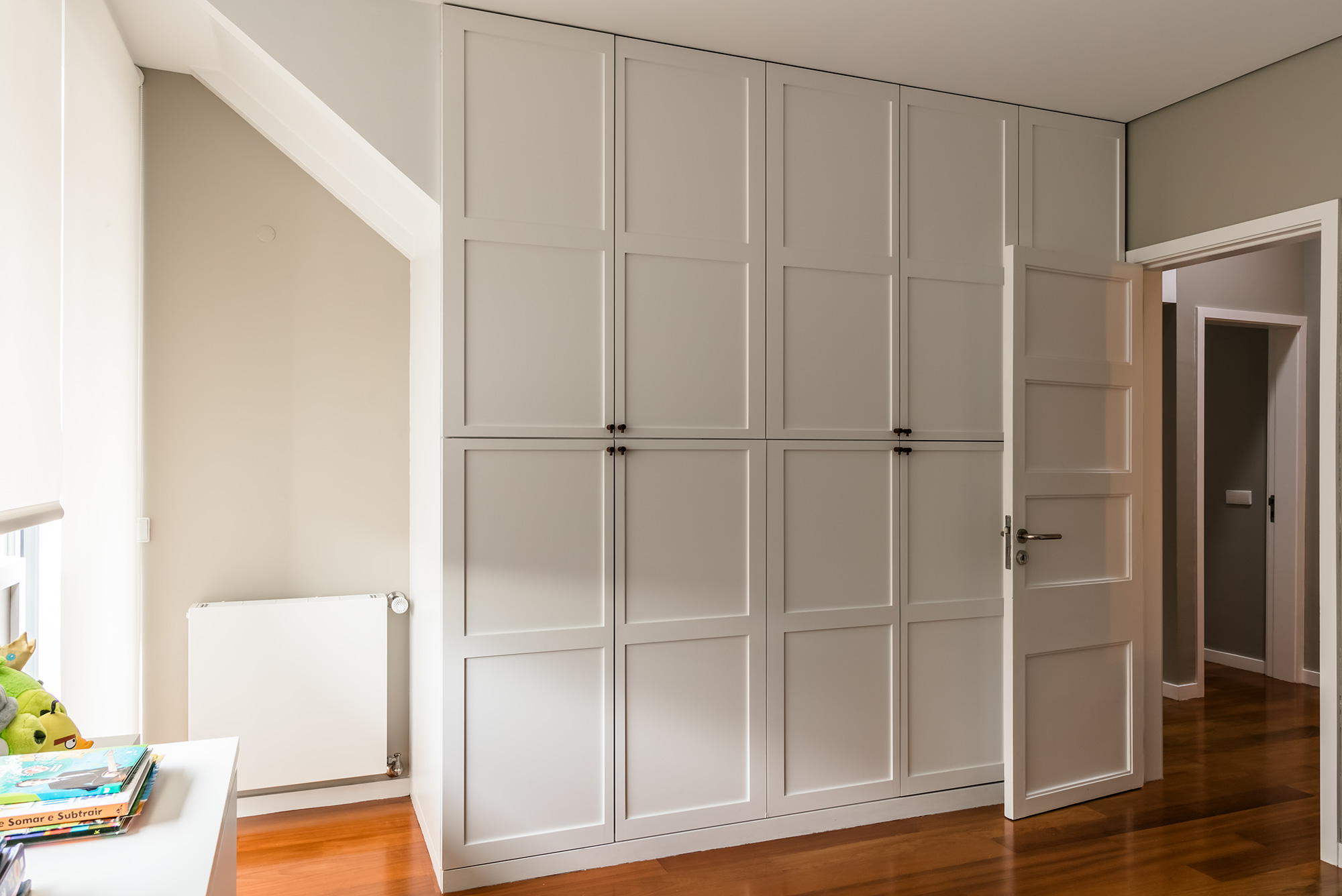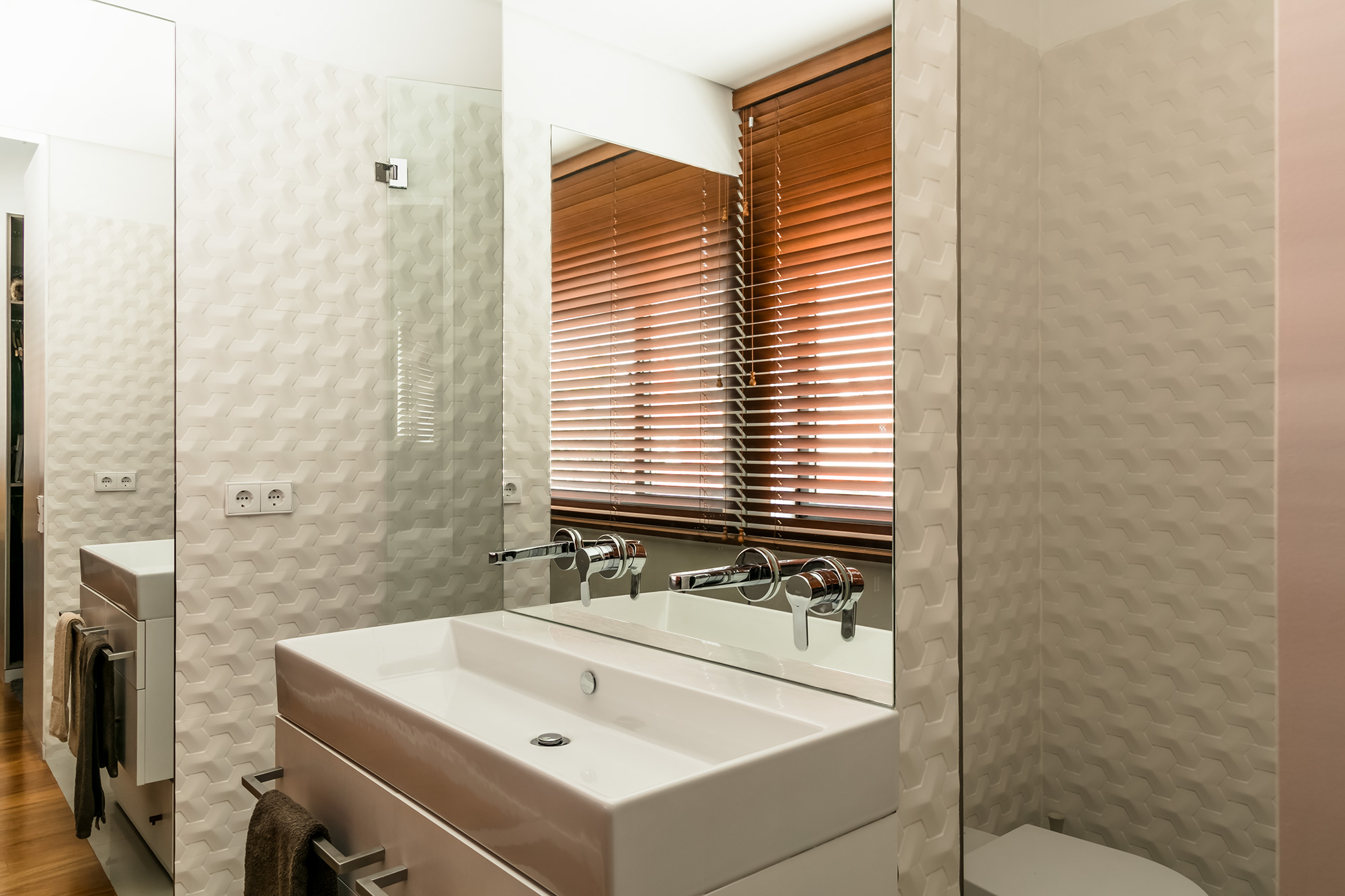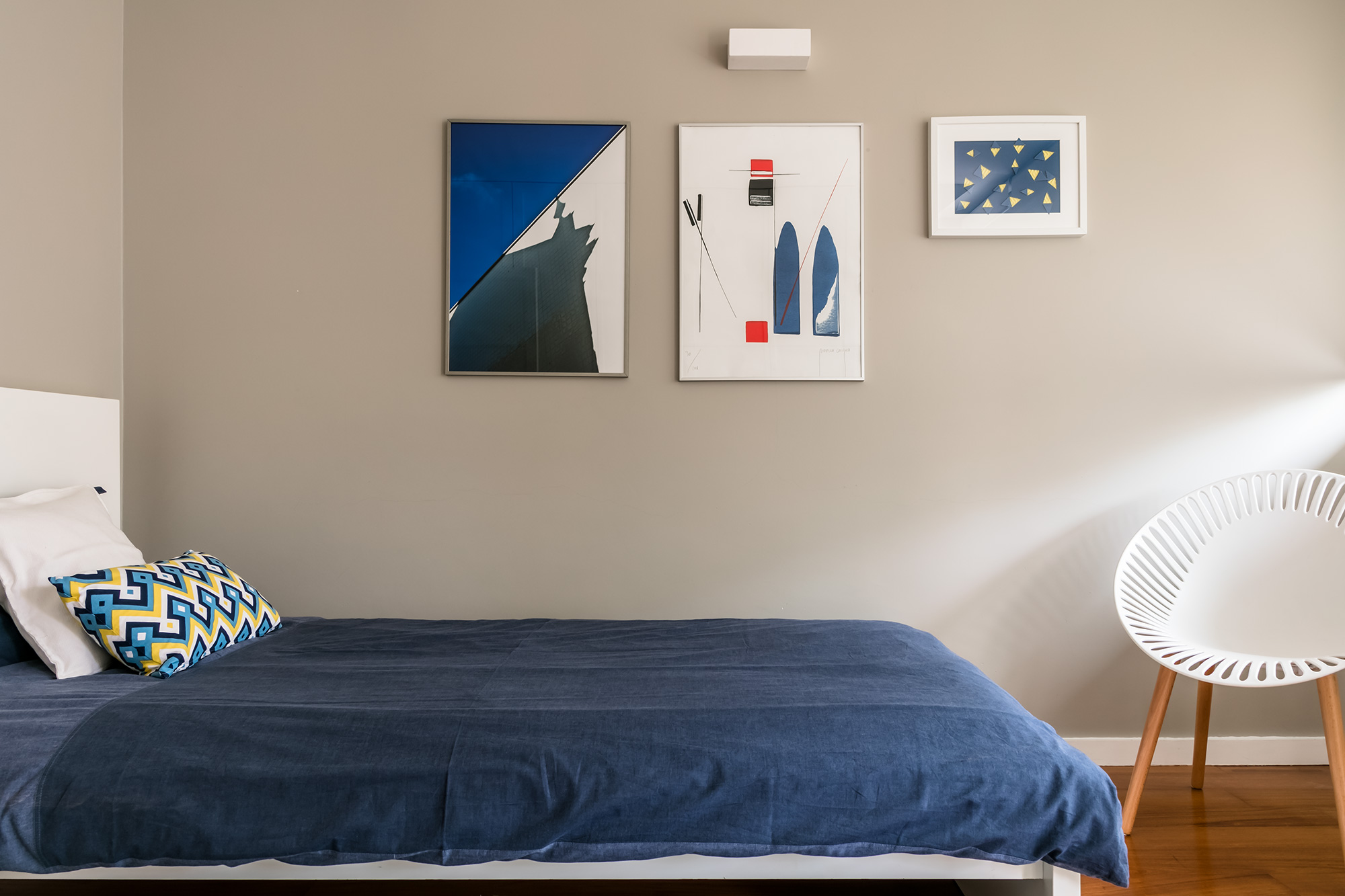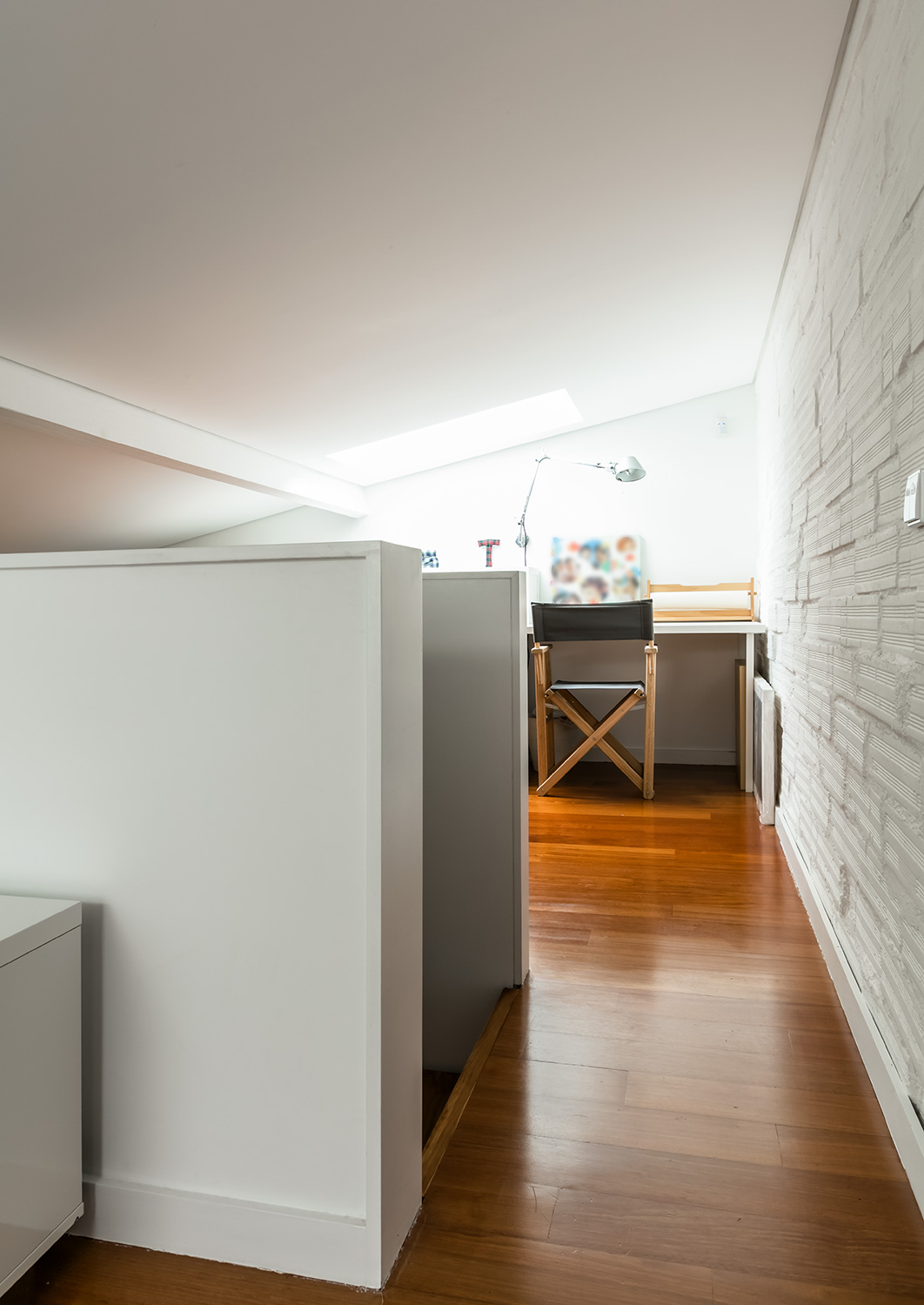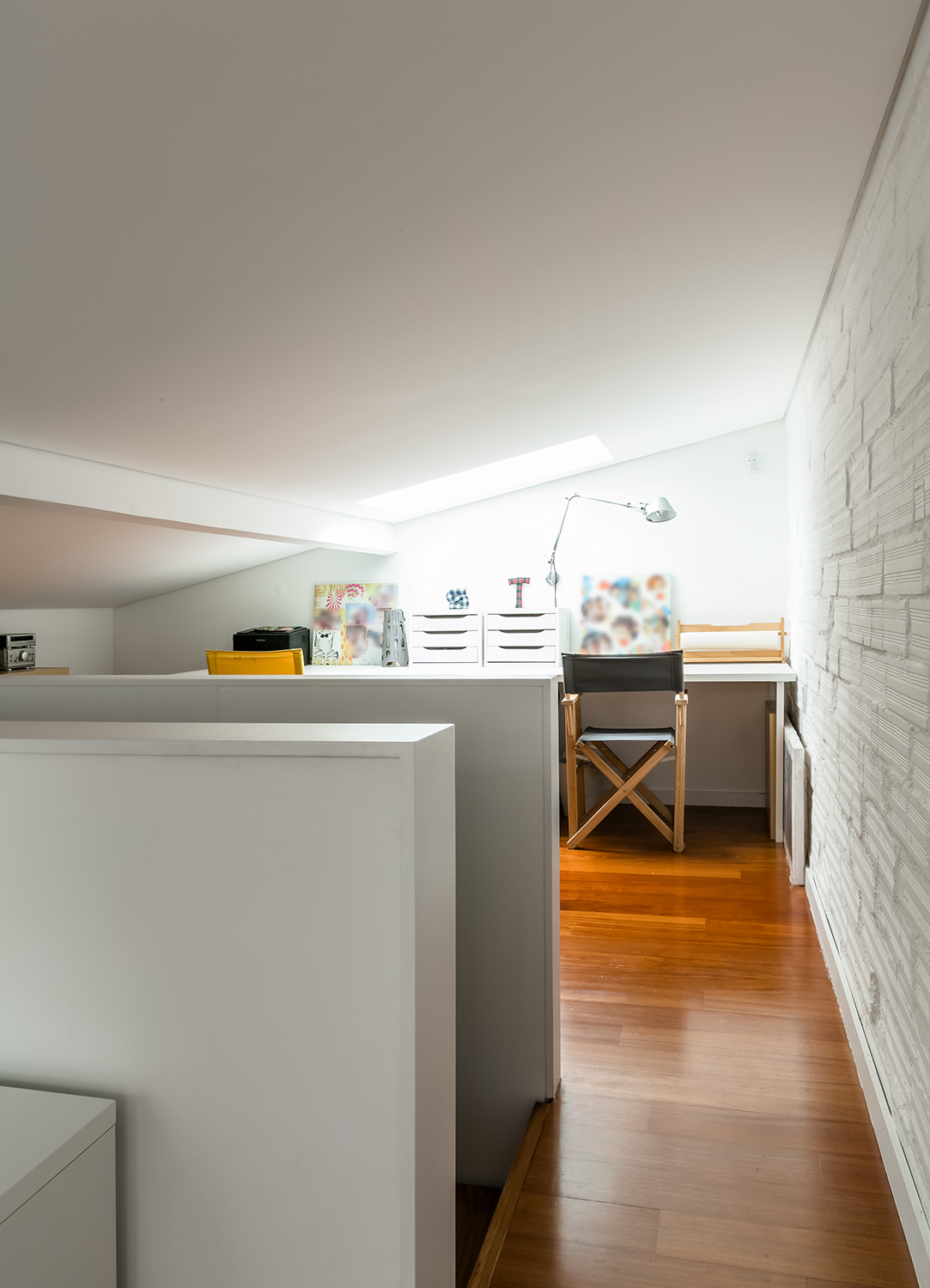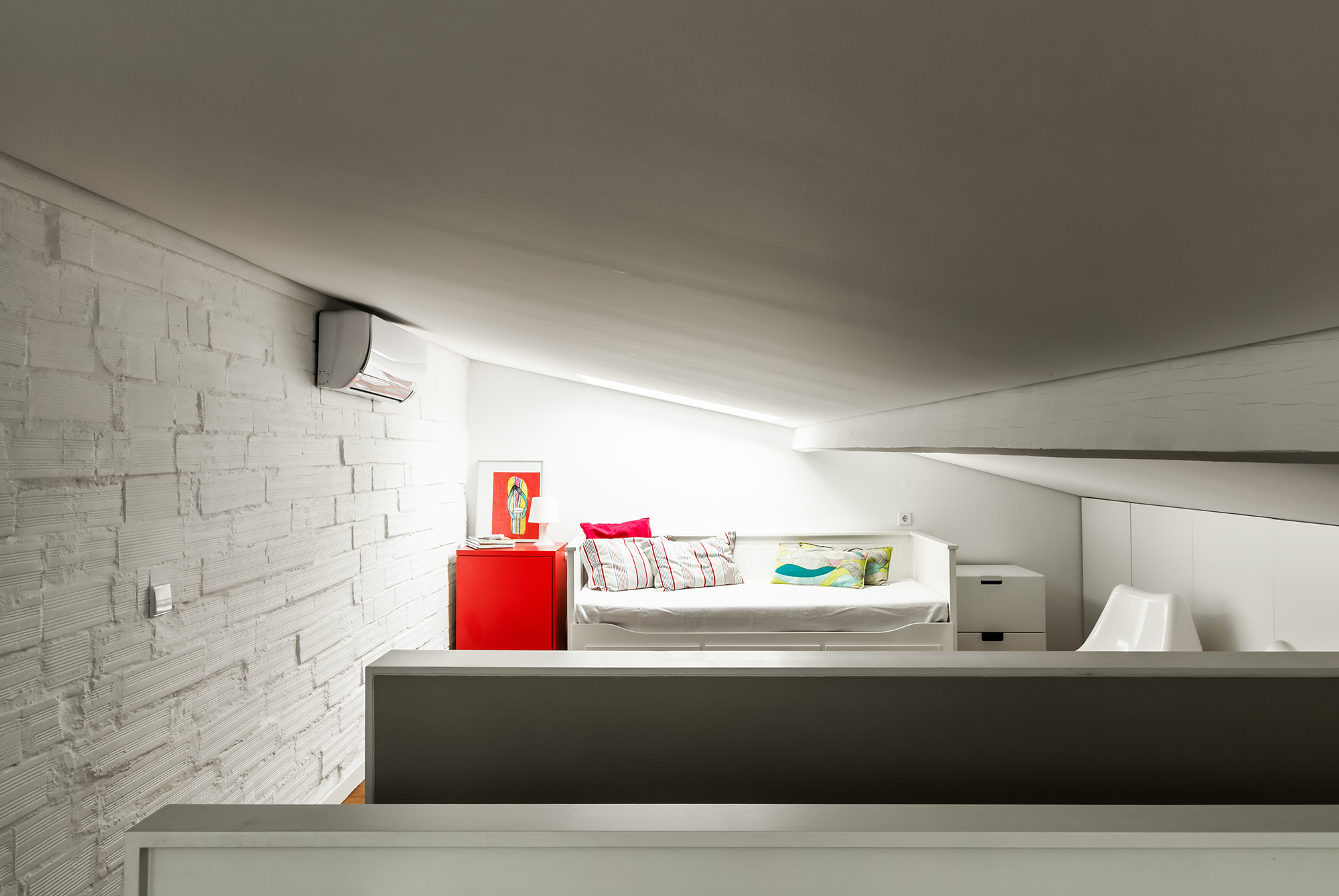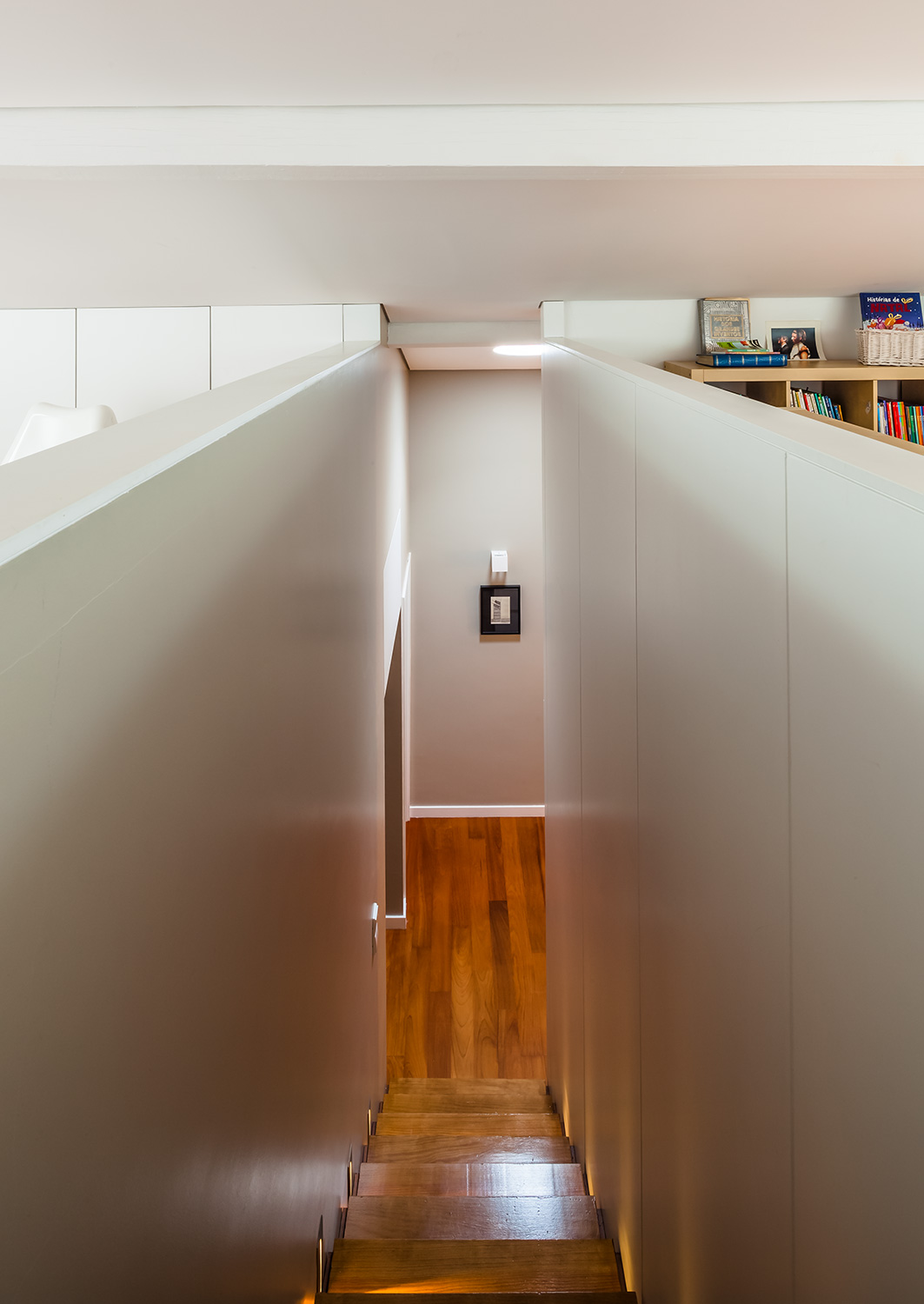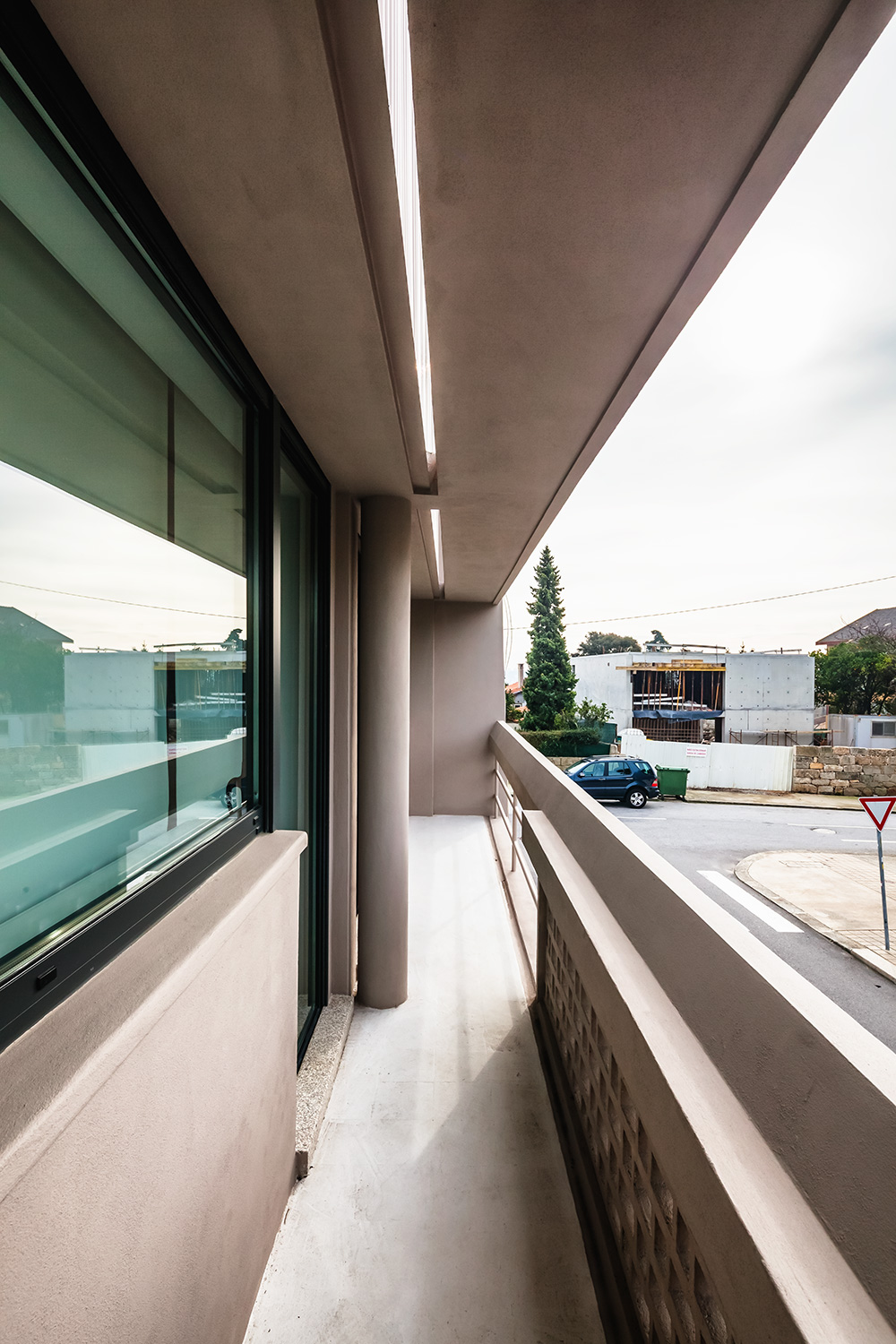BAIRRO DOS MÚSICOS HOUSE
Adress: Rua Raimundo de Macedo, Porto, Portugal
Project year: 2015
Construction: 2015-2016
Author: Arch. Ana da Franca
Project Team: Arch. Patrícia Morais, Arch. Inês Pinheiro Torres
Structures: ASPP - Engenheiros
Contractor: Maria Ferreira e Miguel Sotto Mayor
Photography: António Chaves
Description of the project
Around 1915, the construction of the Avenida da Boavista in Porto, Portugal, were concluded leading to an increase of the urban growth in the areas attached to road axis. In 1950, inserted in that expansive and consolidated urban politics, were constructed a neighborhood with 71 houses, inspired by Modern Movement, called Cooperativa O Lar Familiar ( later the Bairro dos Músicos), designed by Architect Mário Bonito. The neighborhood proposed a new urban knitwear that included the drawing of a new public space and blocks with a full front streetview. Typologically, there are band houses, uni and bifamiliar, with dinamic facades, different colors, rooftops and elevations with oblique lines, pilotis, shading blades and cast bricks that reassure the affixing to the modern language.
The subjet of the intervention was similar to its neighbor houses, a T3 typology, with 2 floors and a private garden, understanding its structural modulation that led to its great spacial clarity. Not only that reason but also due to the modern language this rehabilitation was a challenge. The office had, however, a previous experience interventing an identical house which allowed us to reassure solutions and keep elements with great architectonic value - the facades and its original materials, the main stairs and the roof wood structure.
The main goal of our intervention was to convert and rearrange the existing house in a contemporary space that combined the inherence received from the past with the comfort required nowadays – an improvement on the thermo, acoustic and ecological topics. And also that could reveal the game between light-shadow and form-function.
The project was thought with the baseline of giving efficiency to its use: on the ground floor, there are the common areas - an enormous living room that occupy the entire extent of the house, on the south are located the service wc, the stairs and the kitchen. In the backyard there is a quite small but extremely sunny garden.
In our residential projects, when possible, we love to revive old tradicional architectural elements and we didn't let go of the serving hatch – a characteristic of the bourgeois housing, create a direct passage between the kitchen and the dining room in order to facilitate its use and clarify the routes.
On the first floor we kept a private area of the house: the bedrooms which were carefully designed for the owners. The suite is partially divided into bedroom, closet and wc, three moments that are felt differently in the same division.
From this floor we created access to the attic, opening skylights windows that allow the entrance of the natural light. This room that didn’t exist is considered by many the coziest and quietest part of the house and so programmatically it works as a study and a TV room.
We believe our project contributed to established a relationship between the old and the new, resulting in a coherent, luminous, colorful and textured whole – a true home.
References:
This was a rehabilitation of a house from the 1960s in Bairro dos músicos, in Porto. Houses with a unique architecture, with straight and very sharp lines, typical of construction period.
The main goal was to intervene in the existing structure and adapt it to the modern era, making the different areas more welcoming and wonderful, without modify their originality or the existing materials.
Working with Architect Ana da Franca was a natural process!
From an extraordinary connection with the construction, with the arts, and with all those involved, respect overflowed in a pure, happy partnership with exceeded goals, taking into account the high expectations!
Rehabilitation architecture can only be strengthened with people who know how to respect it!
Best wishes to people like this - magnificent people who manage to turn a humble neighborhood house into a home of happiness.
Maria Ferreira (contractor)
